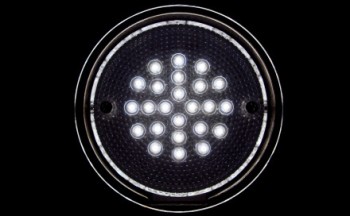Thinking it may be time to upgrade and enhance your underwater pool lighting? Maybe, improve the lighting of your pool surround? The following will help cast some light. Read on.

There was a time, long, long ago, when pool lighting served only two real purposes: (a) to help you find your otherwise pitch black pool at night, and (b) to help you avoid accidentally finding your otherwise pitch black pool at night – and thereby avoid accidentally falling into it. However, the days when lighting the pool was merely a means to facilitate a purposeful (or prevent an inadvertent) midnight plunge have gone the way of the dinosaur. The world, and the pool, have evolved since then.
Of course, if you’re putting in a new pool, you know all this already. You know it because your pool designers and builders will have told you at length how important it is to take time and careful consideration of the type of lighting, and the correct placement of that lighting, so as to achieve the optimisation of glow, the minimisation of shadow, and the maximisation of mood with respect to the shape and internal color of your pool, as well as of any features that it may contain.
If, however, you already have a pool and are merely looking to upgrade its lighting, you may be less aware of just how much, and how rapidly, pool lighting has evolved over the past few years. Thoughtful and technologically advanced pool illumination and lighting does far more than simply alert you when and where not to tread water; it completely changes the look, the feel, the ambience of your pool, its surroundings, and your entire property.
Upgrading the existing lighting of your pool and retrofitting it with new lighting technology is neither as daunting nor as expensive as you might fear. In fact, transforming your old and starkly-lit pool is not only relatively simple, its energy efficiency will actually save you money over time.
Article Contents
What Types of Lights are Available?
Basically, there are 3 types of pool light.
Incandescent
Halogen
LED (light-emitting diode).
Incandescent Lights
These are the traditional pool lights, and if you have a particularly ancient pool, it’s possible that this is what you have. However, these bulbs are no longer available since they fail to meet current Australian lighting standard.
| Pros | Cons |
| Cheap purchase price | Energy inefficient |
| Enables you to find/not fall into your pool at night | Short life span |
| Flat, harsh lighting | |
| Technological equivalent of VHS vs DVD | |
| No longer available |
Halogen Lights

| Pros | Cons |
| 10-20% more energy efficient than incandescent | More expensive purchase price (4 x incandescent) |
| Longer lasting than incandescent | Intense glare rather than “warm” glow |
| Emit a brighter, cleaner light | Annual replacement costs |
LED Lights

The main visual difference between LED and halogen lighting is that LEDs emit a light that is more of a warm glow as opposed to the torchlight beam type of light emitted by halogen. This glow effect is particularly noticeable in swimming pools with light coloured interiors. Darker finishes diminish the amount of light available to reflect.
In addition, LEDs come in a variety of colors – colors that can be changed by either the flick of a switch, the press of a remote, or at regular intervals via an automatically pre-programmed control – to bathe your pool in ever-changing and fading hues and shades of color. Some brands even come with their own smartphone app.
Plus, and this is a big plus, the LED lights are 3 to 5 times more energy efficient than halogen, produce around 90% less heat, and have a life span of around 50,000 hours compared to around 1,000 hours for an incandescent light and around 5,000 hours for a halogen. To put that in real terms, if you run your LED pool lights for 4 hours a day, 7 days a week, that’s a lifespan of 34 years! Indeed, the latest super bright LEDs boast a life span of up to 70,000 hours.
| Pros | Cons |
| 3-5 times more energy efficient than halogen | More expensive purchase price |
| 10 times the lifespan of halogen lights | Repairs are not an option. Entire light must be replaced |
| Richer, more vibrant light | |
| Many and changing colors |
How Much Do LED Lights Cost vs Halogen Lights?
Halogen
Per Fixture $150-$300
LED
Per Fixture $200-$700
Upgrading Existing Lighting – What’s Involved?
Upgrading the underwater lighting in your pool is pretty straightforward. Normally you should expect to be able to use the existing wiring already in place – thereby removing the need either to drain your pool or to dig trenches to run in new wiring. The only minor caveat to this might be if the original installer had failed to install the light with enough length of cable behind it in order to allow for easy splicing later.
There are two types of pool light:


For upgrading Flush lights, the simplest retrofit approach is to switch from a halogen to a LED light version of the same brand. The reason for this is that each brand has a different shaped and sized housing. Alternatively, another simple solution is to replace your existing Flush lights with LED Surface lights.
For upgrading Surface lights there are a number of LED retrofit conversion mounting brackets available, often with universal compatibility across multiple brands, and with multi-voltage compatibility across the range of 12-32V transformers used for swimming pool illumination in Australia.
Regulatory Installation Requirements
Although DIY guides are available online, it is important to be aware that you will need to engage the services of a licensed electrician to install your lighting. Under the Electrical Safety Regulation of 2002 it is illegal in all states for unlicensed individuals to perform electrical work on water equipment – and that includes fitting a new light to a swimming pool. For full details see ESR 2002 Pt.5 s68, and, in Queensland, ESR 2013 Pt.6 s72.
Furthermore, the installer needs to ensure that the work complies with Australian safety standards – specifically AS/NZ 3000:2007 that specifies required voltages, IP ratings, power supply connection methods, etc.
Finally, the pool lights themselves need to be certified as being in accordance with Australian Standards.
Installation Costs

How Many Pool Lights Are Needed?
The number of lights needed properly to illuminate your pool is obviously going to depend on the size of your swimming pool. As a rule of thumb, the generally recommended requirement is to aim for 5.4 watts per square metre (0.5 watts per square foot).
So, if you’ve got an 8.5 x 4.4 metre swimming pool you are going to require a rounded 200 watts of lighting – in other words, (8.5 x 4.4) x 5.4. In practical terms, that translates into the need for 2 x 100 watt halogen lights. Having said that, a lot depends on the shape of the pool and, as mentioned above, the interior colour of the pool surface. For rectangular pools with a light interior, often only a single LED light will suffice. Non-rectangular pools and/or darker interior pools need a little more help.
The chances are, of course, that your existing pool has the correct number of lights already fitted for its size. If so, then when upgrading to LED, all you need to remember is that LEDs are 3-5 times more energy efficient than halogens. That means that a 20 watt LED light emits the same amount of light as a 100W halogen bulb.
Adding Additional Lights
However, it may be that your current swimming pool is underserved in terms of square metreage by the number of already installed lights. Alternatively, your pool may have curves that the existing lights are failing to reach and illuminate. In either of these two events, you may need to consider actually adding additional lights to your pool.
Traditionally, this unavoidably involves biting the budgetary bullet. It also traditionally involves having to drain the pool, drill through the pool wall, and watching your yard get torn up in order to dig a trench for laying new cable.
Before you go down this route, however, an alternative may be to investigate the less invasive possibility of installing an LED Eyeball light. Rather than drilling through the pool wall, these install directly into the eyeball water return jet. Basically, the way they work is that the existing eyeball water return jet is replaced and retrofitted with a composite water return jet that includes an array of LED lights. Rather than having to dig a trench, the light cable utilizes the existing water return pipe as its conduit.
The LED Eyeball lights only produce between 1 and 3 watts per fixture, so it’s fair to say that they are not necessarily going to be a cure-all lighting solution. However, for illuminating corners or steps that may currently be in shadow, they are an option definitely worth considering. And they are available in a range of colors.
Finally, if either for physical or budgetary reasons you’re unable to add additional underwater lighting, there’s always the option of floodlighting your yard and pool area. Admittedly, it’s nowhere near as aesthetically pleasing but, even if it’s less easy on the eye, it’ll be a lot easier on your wallet.
Placement and Positioning of Pool Lights
In a perfect world, it’s always a good idea to ensure that the lighting in your pool is positioned in such a way so as to fully illuminate the swimming pool while, at the same time, not casting a glare into the house. Generally, for rectangular pools, the principal source of light is situated at the deep end. It’s a good idea, therefore, not to have the deep end facing your house.
However, in terms of the placement and positioning of the lighting, if all you are looking to do is upgrade your existing lighting without draining and drilling to create new lights, you are going to be restricted by the lights you currently have in place. If you’re stuck with a pool that stubbornly insists on facing the wrong way, an alternative may be to install a lower wattage light at the end that is causing the intrusive glare.
Lighting Pool Features and Pool Surrounds
If your pool includes a spa, the ambiance and feel of this separate space can be greatly enhanced by differentially coloured lighting from the rest of the pool. If the spa already has lighting and you are merely looking to upgrade it, the retrofit is simple (see above). But bear in mind that you won’t need a whole lot of wattage to illuminate it. If it isn’t already fitted with lights, consider retrofitting an LED Eyeball Light.


Evolution is defined as improvements to the gene pool and to life, made visible and illuminated by changes over time. The evolution of pool lighting, on the other hand, is defined as improvements to the pool and to your life, made visible by changes to the way the pool, and its surroundings, are illuminated over time. And pool lighting has most definitely evolved.
Recommended Products
Related Reading:

Related Reading: Swimming Pool & Spa Electrical Requirements in New York State


We are looking to replace our light that does not work